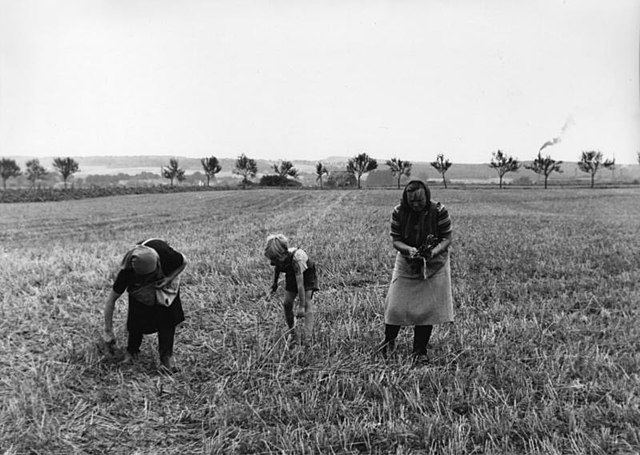Food rescue, also called food recovery, food salvage or surplus food redistribution, is the practice of gleaning edible food that would otherwise go to waste from places such as farms, produce markets, grocery stores, restaurants, or dining facilities and distributing it to local emergency food programs.
Food rescue
Food rescue
Food rescued from being thrown away
A food-waste collection truck fills approximately 40 bins with food waste collected from large kitchens. This food will later be turned into nourishment pills for pigs.
Gleaning is the act of collecting leftover crops from farmers' fields after they have been commercially harvested or on fields where it is not economically profitable to harvest. It is a practice described in the Hebrew Bible that became a legally enforced entitlement of the poor in a number of Christian kingdoms. Modern day "dumpster diving", when done for food or culinary ingredients, is seen as a similar form of food recovery. Gleaning is also still used to provide nutritious harvested foods for those in need. In the United States, it is used due to the need for a national network to aid food recovery organizations. This is called the National Gleaning Project, which was started by the Center for Agriculture and Food Systems at Vermont Law and Graduate School to aid those less fortunate much like the old Christian Kingdoms.
The Gleaners by Jean-François Millet, 1857
Gleaning by Arthur Hughes
Impoverished Germans gleaning in 1956
Jules Breton, The Gleaner, 1875, Aberdeen Art Gallery








